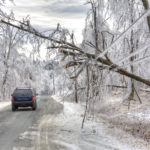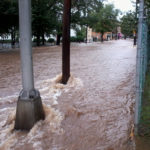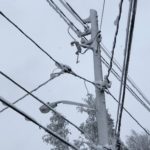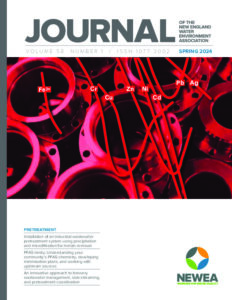 In New England, we’re used to blizzards. Suspended travel and downed power lines and trees trigger power generators, cleanup, and restoration. The usual. In most cases, we prove our resilience again and again just by doing our jobs. However, some utilities, due to things outside of their control like their location and the characteristics of the weather event, suffer more than their even share of losses and upsets compared to their neighboring utilities. Their lived-to-tell experiences provide us with cautionary tales about events they, like most of us, never expected to happen to them. But unlike most of us, they did.
In New England, we’re used to blizzards. Suspended travel and downed power lines and trees trigger power generators, cleanup, and restoration. The usual. In most cases, we prove our resilience again and again just by doing our jobs. However, some utilities, due to things outside of their control like their location and the characteristics of the weather event, suffer more than their even share of losses and upsets compared to their neighboring utilities. Their lived-to-tell experiences provide us with cautionary tales about events they, like most of us, never expected to happen to them. But unlike most of us, they did.
Sometimes a whole region is unlucky. Remember during the last days of August 2011, as it made its way up the U.S. East Coast, Superstorm Irene tested New England’s resiliency and Vermont, a state with no ocean coastline and an unlikely candidate for hurricane devastation, or so we thought, endured the worst damage while receiving over 11 inches of rain in some parts?

Car drives under dangerous trees weighed down by ice and powerlines after an icestorm. The weight of ice can easily snap power lines and break or bring down power/utility poles split trees in half and turn roads and pavements into lethal sheets of smooth, thick ice
And remember when New England was tested again two months later by the freakish Halloween Nor’easter? In some areas of Connecticut, power outages lasted 11 days. Across the Northeast region, there were millions without power, towns without gas, businesses with limited or no internet access, major roads closed, and businesses unable to communicate with customers and staff.
Are these freak events or are they an indicator or something here to stay?
Scientists and risk analysts would caution us, “our risks are not what they used to be.” Scientific studies indicate that what we are experiencing is an emerging new class of disasters due to changes in our climate. As a result, many insurance companies are already updating their risk models.¹
How about our water and wastewater utilities? The consequences of not being prepared for emergencies have never been greater. Yet, the denial or minimization of future disastrous consequences is a big reason why each of us are not better prepared. “That’s not going to happen here,” or “It’s not going to happen again” are beliefs we hold, yet they are built on sand.
The 9/11 Commission Report cautioned us, “We’ve lost our imagination for what can happen.” After Hurricane Katrina, experts cautioned us, “We’ve lost our ability to plan.” Every single one of the extreme events that have occurred anywhere over recent years is a wake-up call for us here.
So how do we respond reasonably to this new class of disasters and better prepare our utilities? Here are some recommended and standard practices for building a more resilient utility:

A street flooded from Hurricane Irene in New Jersey in August 2011. Taken with a Samsung SGH-A697 phone.
Identify the risks: While it is impossible to be aware of every single risk to your utility, it is possible to be aware of the most critical risks (e.g., supply chain vulnerabilities; computer network located in flood zone; critical facilities without backup power; areas of our system vulnerability to a single critical component failure; etc…). Maintain an acceptable level of risk awareness by updating your knowledge as people, systems, facilities, resources, and the surrounding environment change. Performing a business impact analysis and a critical infrastructure risk assessment are great ways for water and wastewater utilities to identify risks and define opportunities to control risk.
Even if this is not your utility’s year to fund significant hazard mitigation projects, keep improving your utility’s preparedness: Some low-cost risk mitigation and emergency preparedness activities, like performing an emergency tabletop exercise or updating your emergency response plan’s emergency phone list, can significantly reduce risk at your utility. Plus, many risk mitigation activities such as establishing alternate work sites, improving emergency notification systems, and enhancing emergency power generation reduce risk for many hazards at once. The return on investment can be significant and begins quickly.
Support a culture of risk identification and emergency preparedness: While culture is an intangible set of beliefs and values shared by an organization, communicate the importance of utility preparedness and set a new status quo for staff to acknowledge old risks, identify new ones, and brainstorm ways to reduce those risks. Employees follow their leaders, and so the change must come from the top. Find ways to encourage employee’s meaningful contributions in risk management activities. Also find ways to discourage the “it’s not going to happen here (or here again)” mentality. Standard practices that support an emergency preparedness culture are identified in the AWWA G440-11 Management Standard on Emergency Preparedness Practices.
 Develop response plans for those risks that cannot be fully mitigated: Risk mitigation activities should coordinate with emergency response planning. It requires forethought and strategy, but in the end, the extra work up front saves time and money and generates a more effective program. Having a practiced and updated response plan in place prior to an emergency occurring maximizes potential to limit loss of life, property damage, and business disruptions while actively managing your reputation. It’s not the plan itself that is going to prove most valuable during an emergency. What is going to protect your utility’s mission at the moment of a crisis is the knowledge gained by you and your staff during the planning, training, and risk mitigation process.
Develop response plans for those risks that cannot be fully mitigated: Risk mitigation activities should coordinate with emergency response planning. It requires forethought and strategy, but in the end, the extra work up front saves time and money and generates a more effective program. Having a practiced and updated response plan in place prior to an emergency occurring maximizes potential to limit loss of life, property damage, and business disruptions while actively managing your reputation. It’s not the plan itself that is going to prove most valuable during an emergency. What is going to protect your utility’s mission at the moment of a crisis is the knowledge gained by you and your staff during the planning, training, and risk mitigation process.
Last words: When the disastrous consequences from an emergency become public, you want to be ready. Plan like you train. Train like you fight. And fight confidently. We can do it.
Kate Novick is the Managing Director of Gradient Planning LLC in Middletown, CT. Contact her at knovick@gradientplanning.com or 860-402-6597.
¹Climate Risk Disclosure by Insurers: Evaluating Insurer Responses to the NAIC Climate Disclosure Survey, CERES, September 2011.



No comments yet.